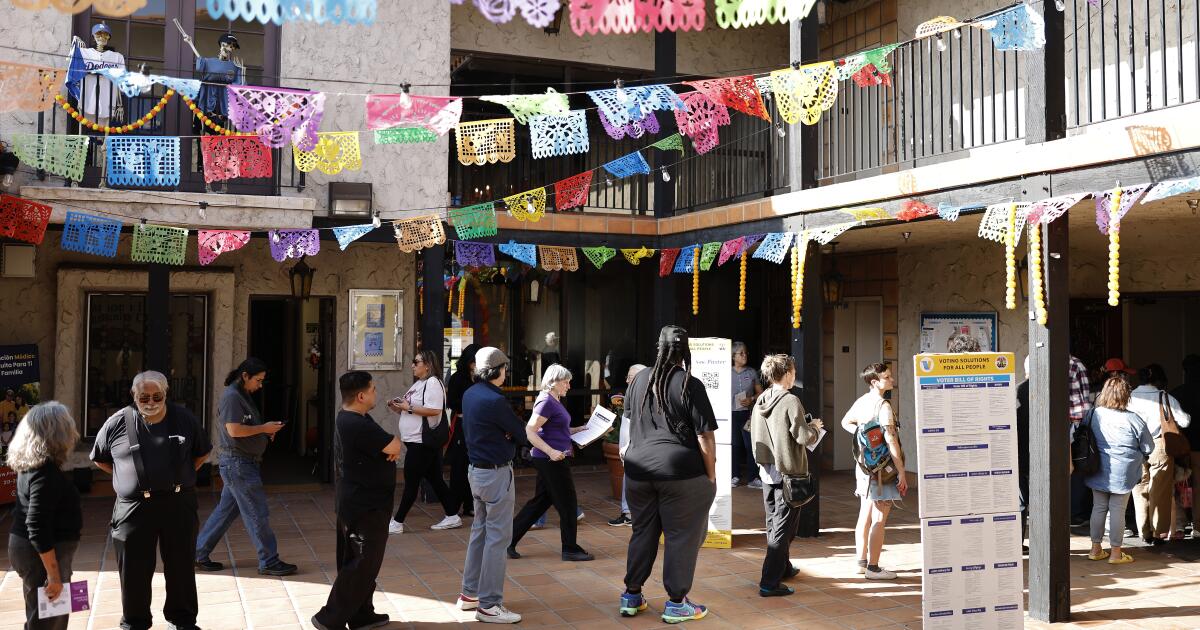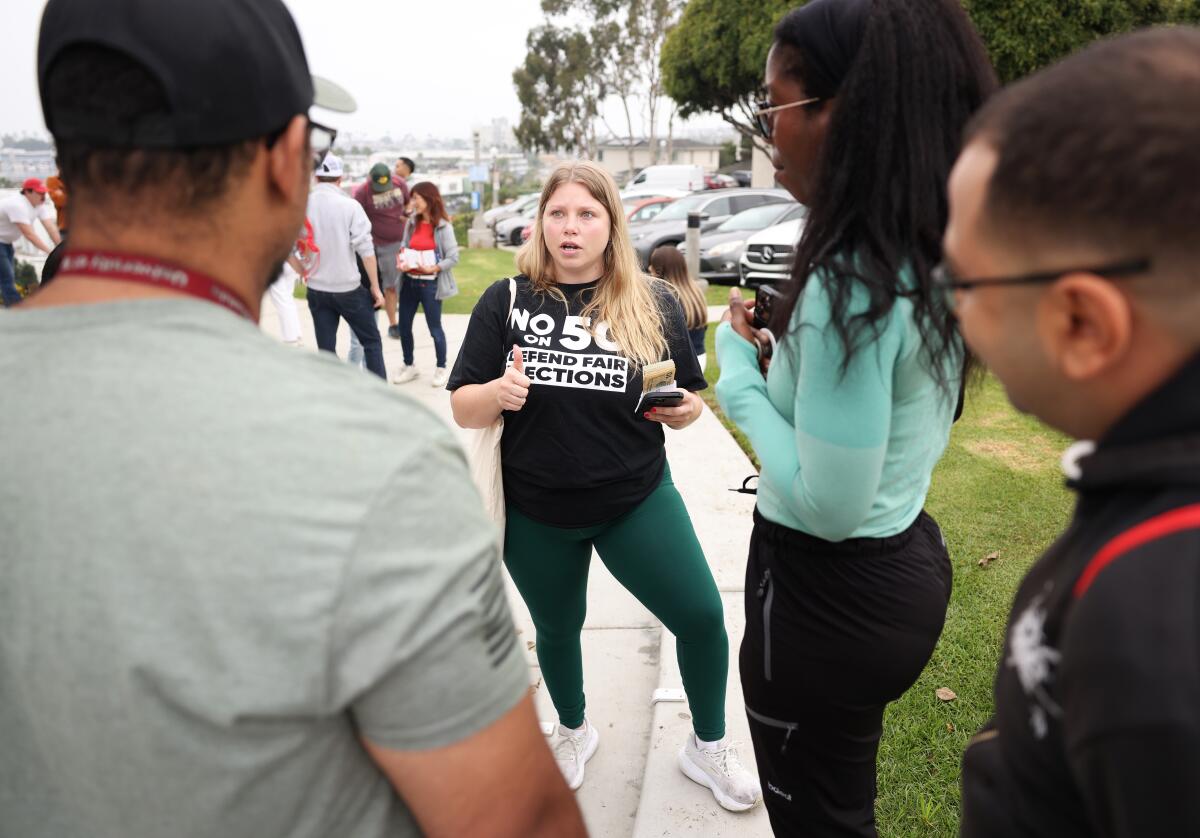California Democrats will be urged to ‘persist’ at their convention this weekend. Here’s the story behind it
Stenciled on sidewalks, projected on buildings and tweeted in hashtags, a one-word message will greet California Democrats as they arrive in Sacramento for their party convention this weekend: Persist.
It’s not a guerrilla marketing campaign for a politician or a product. It’s the brainchild of a crew of top Democratic strategists — all women — who were seeking a cathartic way to channel their grief over the outcome of the 2016 presidential election.
What started as an internal support group has become a multi-pronged effort to promote female empowerment, capped off by a 5-foot-8, 400-pound bronze figure of a defiant young girl perched on the roof of the Democratic Party headquarters in downtown Sacramento — the West Coast’s own version of the Wall Street “Fearless” statue.
Here’s how the effort evolved:
Democratic strategists commissioned their own version of the Wall Street “Fearless” statue. (Melanie Mason / Los Angeles Times)
(Melanie Mason / Los Angeles Times)
The inspiration
The word “persist” took on new political meaning in February, when GOP Senate Majority Leader Mitch McConnell cut Massachusetts Sen. Elizabeth Warren off from speaking, offering as an explanation, “She was warned. She was given an explanation. Nevertheless she persisted.”
But it was a month later, when a statue of an assured girl facing down the iconic Charging Bull statue appeared on Wall Street, when Angie Tate decided to act.
The “Fearless Girl” statue stands facing the Charging Bull statue as tourists take pictures in New York on April 12. (Jewel Samad / AFP/Getty Images)
(JEWEL SAMAD / AFP/Getty Images)
Tate, chief fundraiser for the California Democratic party, saw a picture of the “Fearless” statue before her morning walk to the office. By the time she arrived, she had the makings of a plan — and was quickly drafting friends to join.
“There was a morning when there were a lot of texts from Angie,” recalled Robin Swanson, a veteran Democratic communications consultant.
Tate’s idea was to make their own version of “Fearless” for the West Coast. Within weeks, they had found a model for the statue — the 5-year-old daughter of Democratic strategist Dana Williamson — and two anonymous donors to cover the $16,000 tab.
The message
The organizers of the campaign have their own definitions of what it means to persist.
“It’s a symbol that we can all choose our own path if we continue to stand, even when it’s really hard,” Tate said.
For Swanson, the word carries a political connotation after last year’s presidential election.
“For me, I am inspired by Hillary Clinton — inspired that every day she gets out bed and has something to say,” Swanson said.
Children of the “Persist” campaigners pose at the California Democratic Party headquarters. (Jeff Walters)
But she and her colleagues hastened to make clear that their message was not limited to partisan politics.
“I was picturing a little girl in a classroom afraid to raise her hand,” said Williamson, who is an advisor to Gov. Jerry Brown. “We want this next generation to see powerful images of strong women and girls so that they believe very early on that [they] not only can they speak up, but that they should.”
The clues
A completed stencil in Sacramento. (Melanie Mason / Los Angeles Times)
Robin Swanson stencils “persist.” (Melanie Mason / Los Angeles Times)
In the run-up to this weekend’s party convention, the Persist campaign planners steadily dropped hints about their effort. They launched a website and encouraged women to share their own stories about persistence on social media. They recruited heavy-hitter friends in California politics — including former First Lady Maria Shriver, Brown’s top aide Nancy McFadden, influential labor and Democratic Party figures, even Colusa, the governor’s dog — to reference the campaign on their Twitter feeds.
The big reveal
Finally, on Friday morning, the “persist” statue was installed on top of the Democratic Party headquarters in Sacramento — which had its roof reinforced to accommodate the new addition.
The references to the campaign will crop up throughout the convention, including on fliers slipped in delegate goody bags and in planned mentions in speeches by Lt. Gov. Gavin Newsom and Sen. Kamala Harris.. But organizers are hoping the campaign endures beyond the weekend; they’ll continue to collect stories on their website and have discussed potential for other art installations across the state.
For now, their statue now peers out from the corner of the building to passersby.
“Little girls need something to look up to,” Swanson said. “They can literally look up at the statue of ‘persist’ and say ‘I can persist.’ Frankly, we all need a little reassurance ourselves.”
UPDATES:
1:30 p.m. This article was updated to include planned references to “persist” in convention speeches by Lt. Gov. Gavin Newsom and Sen. Kamala Harris.
This article was originally published at 1:20 p.m.


